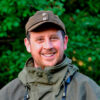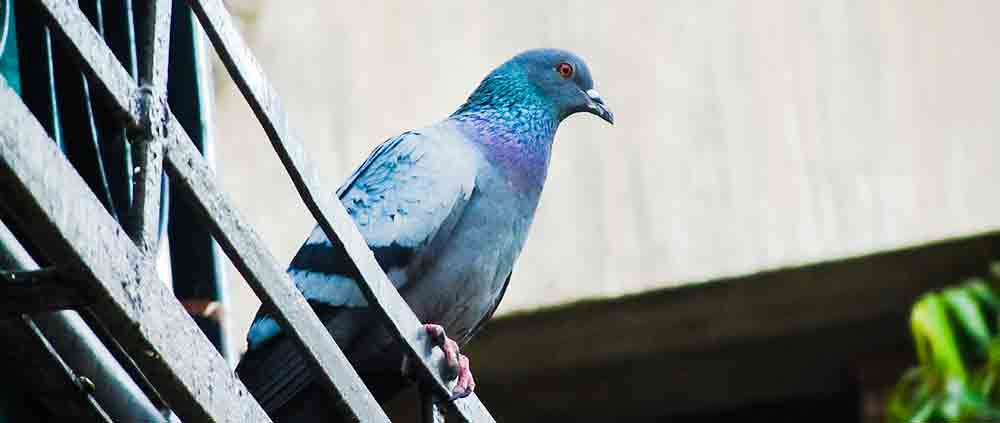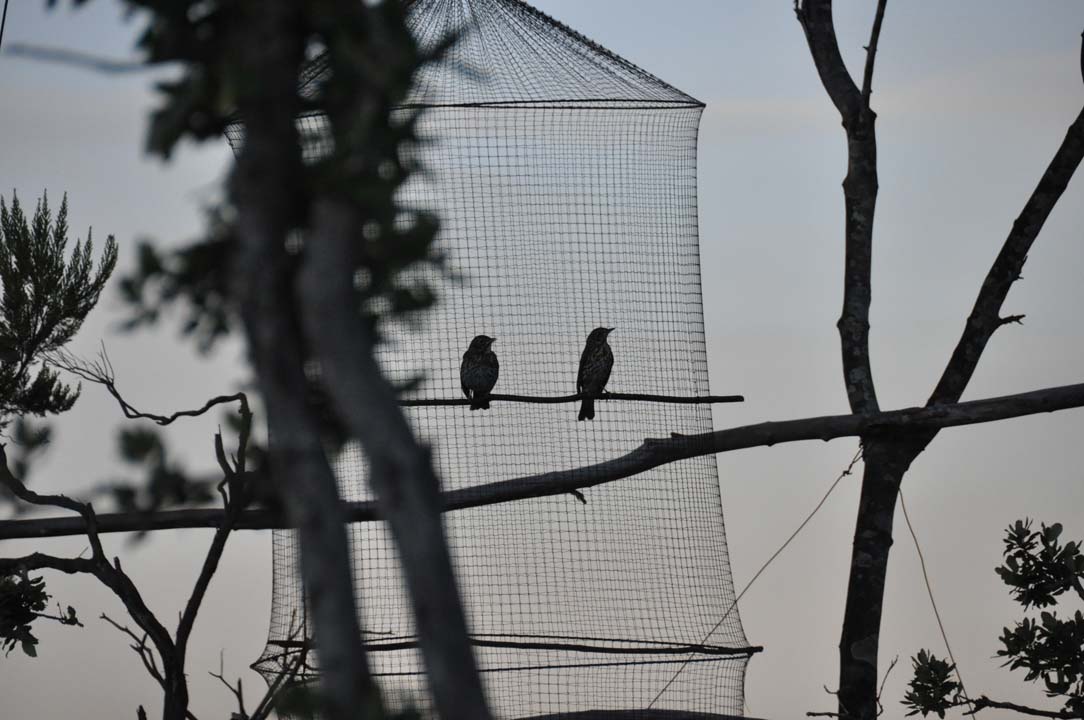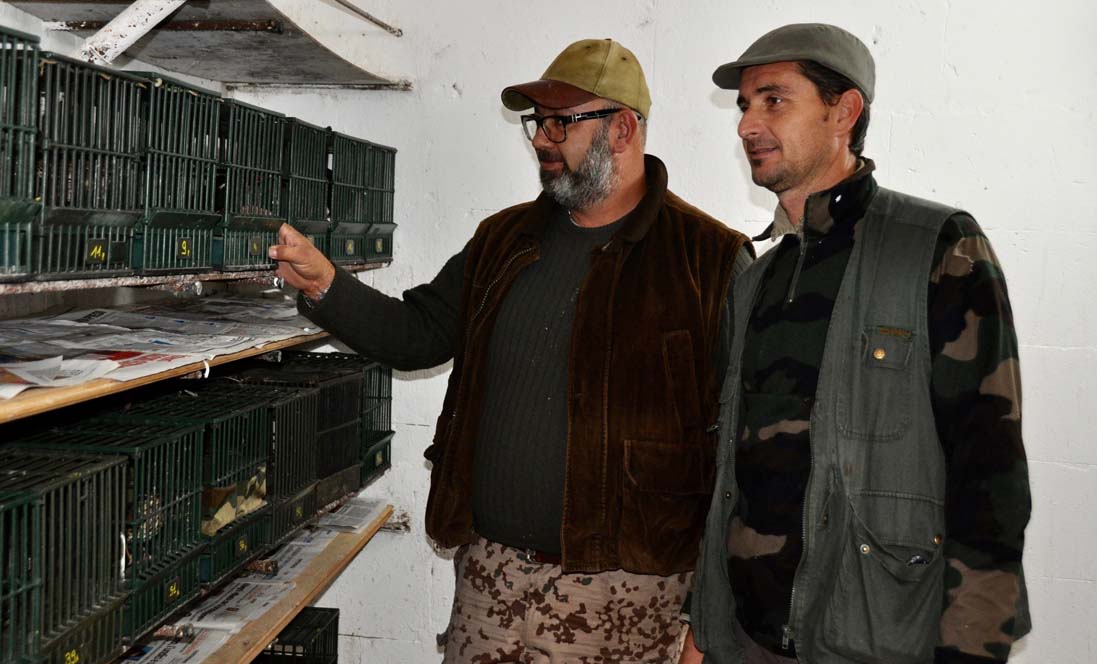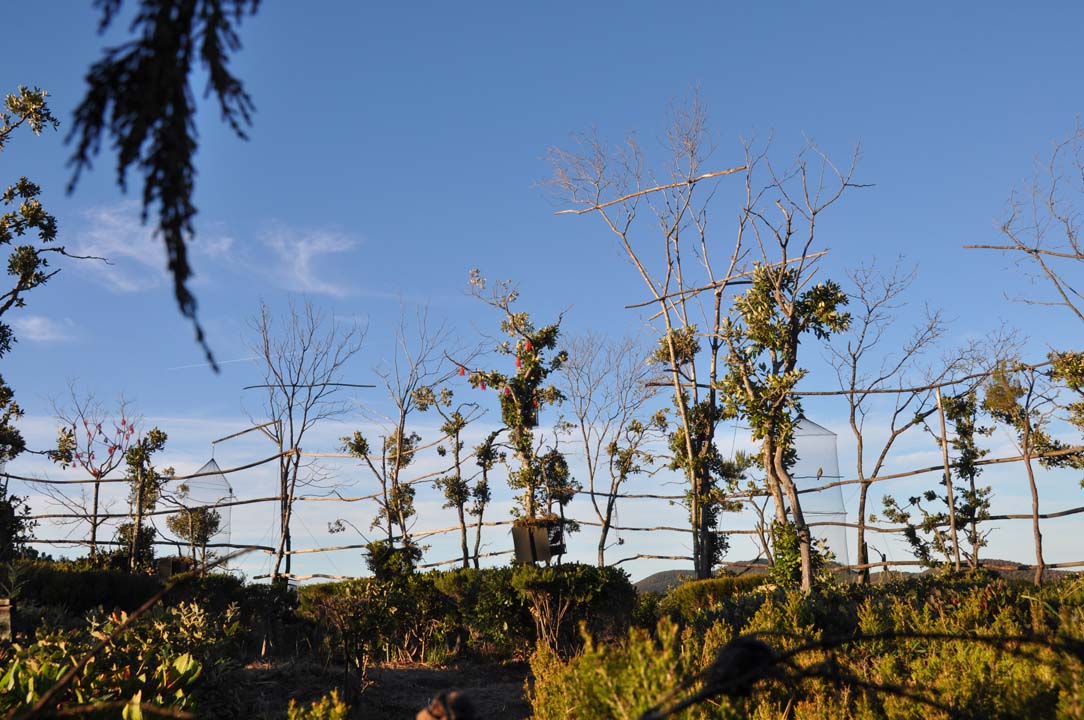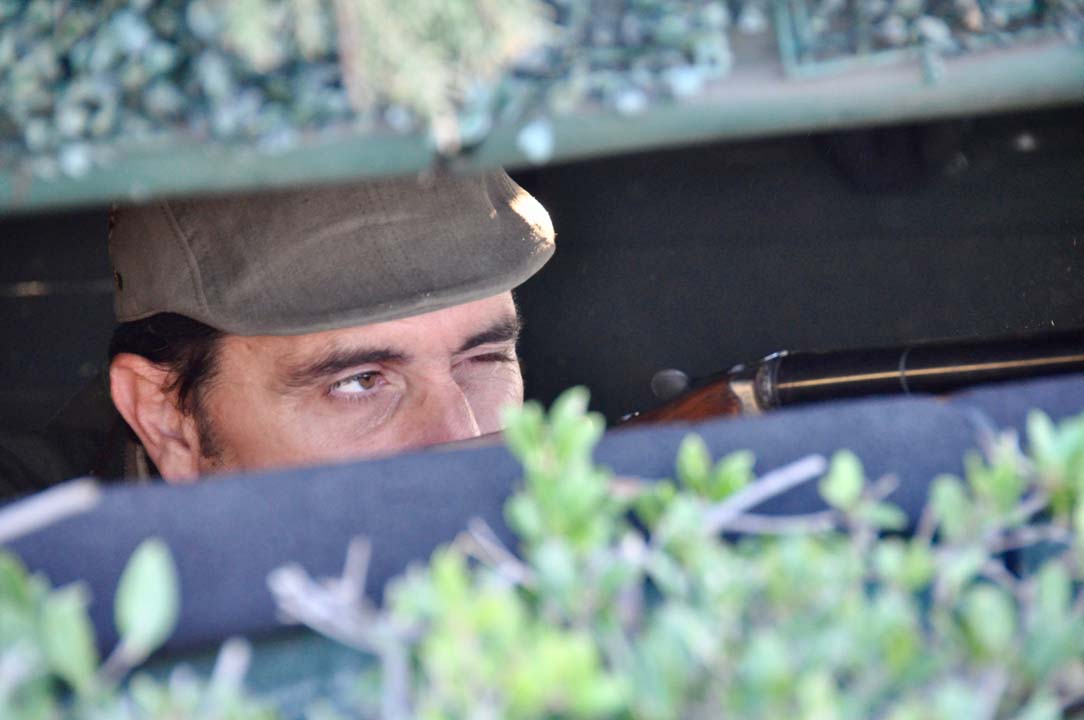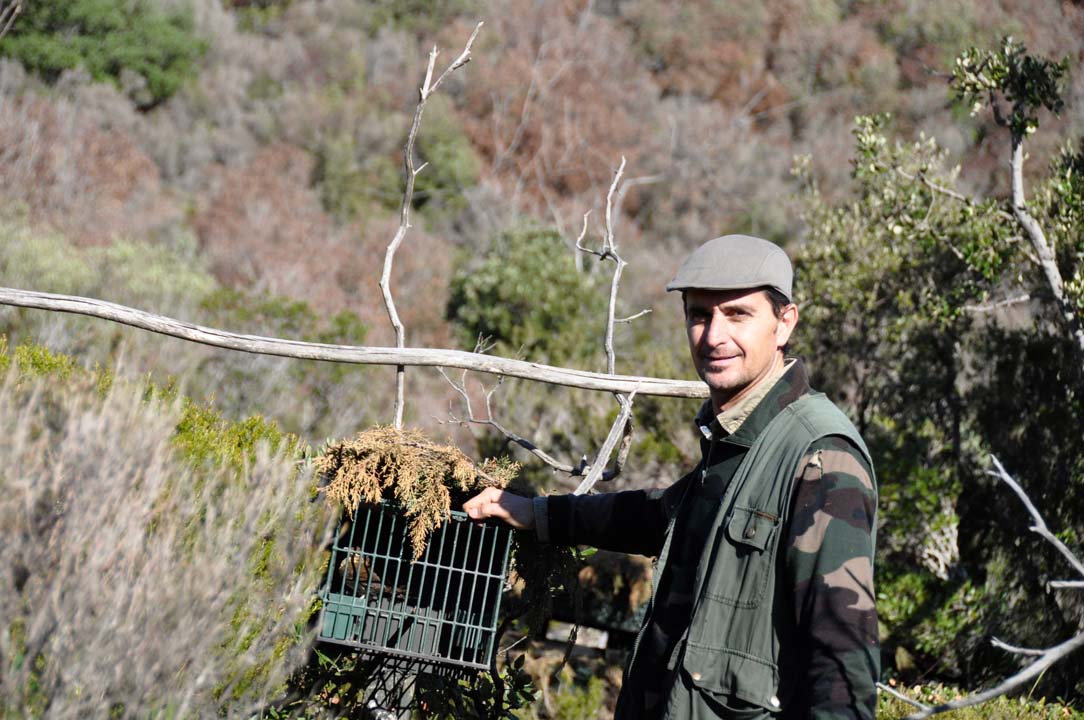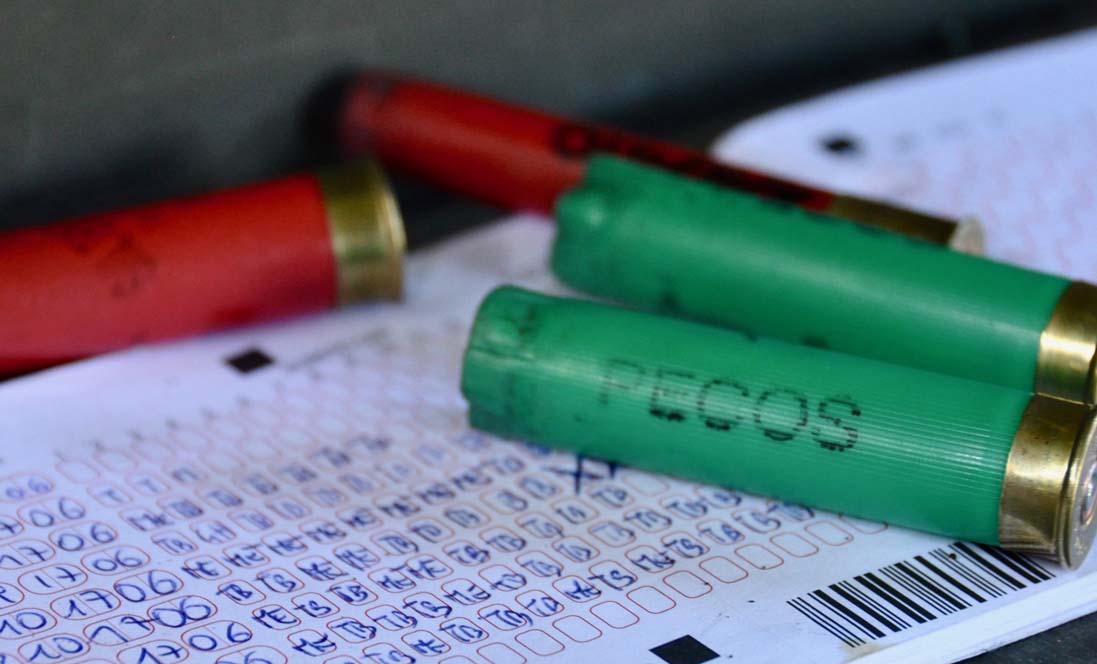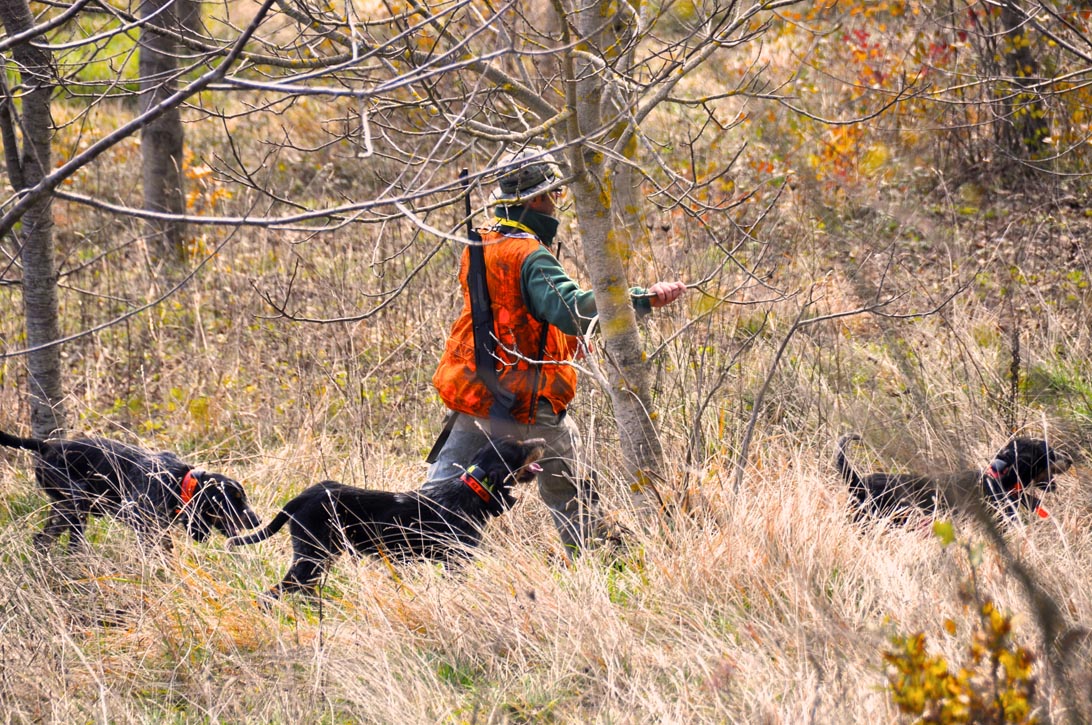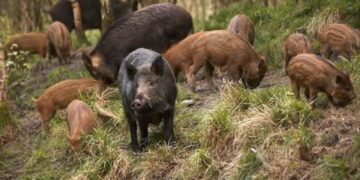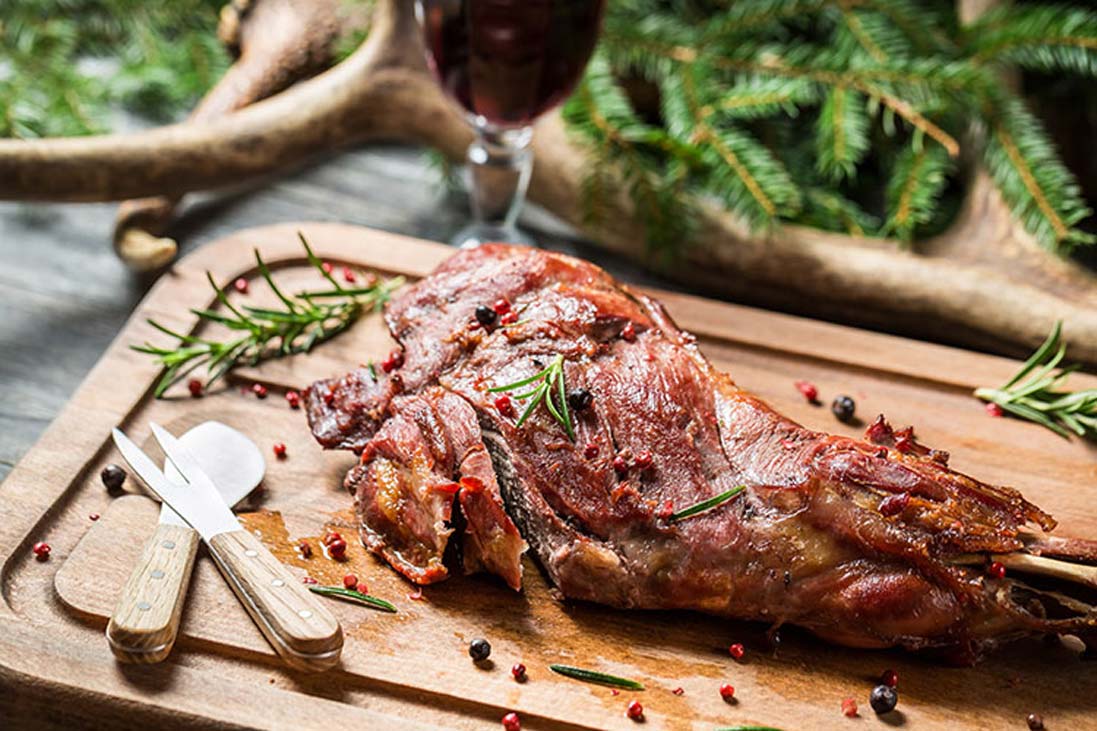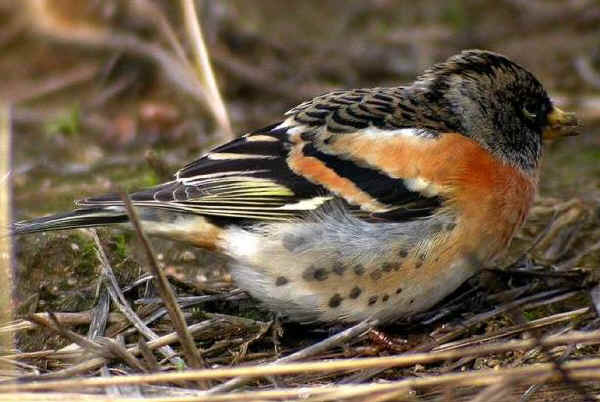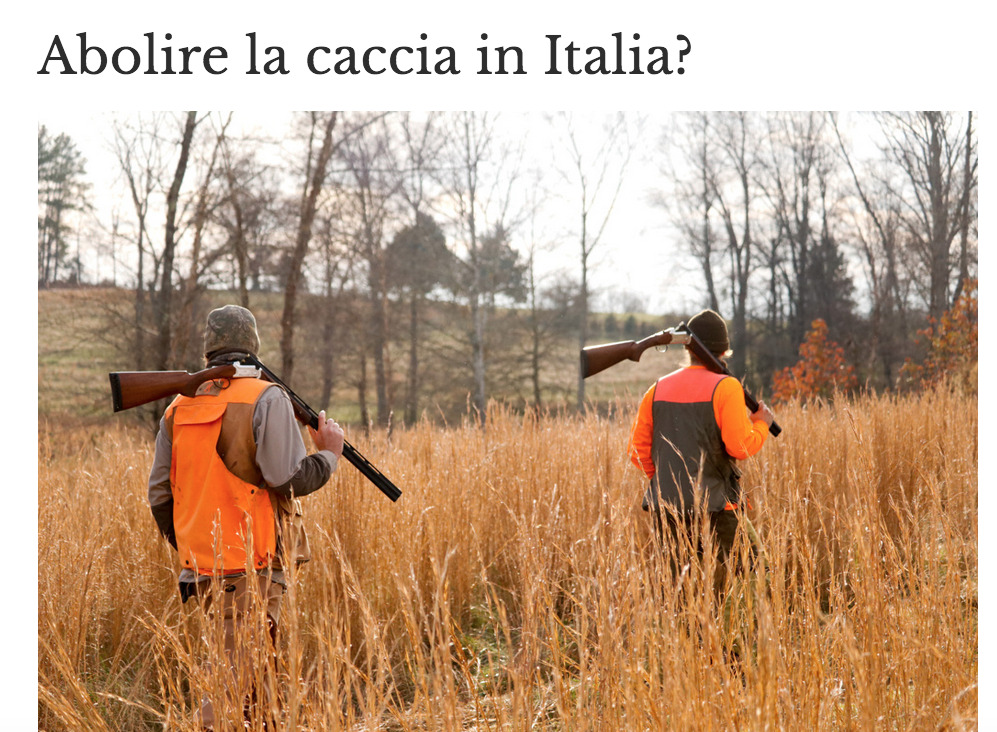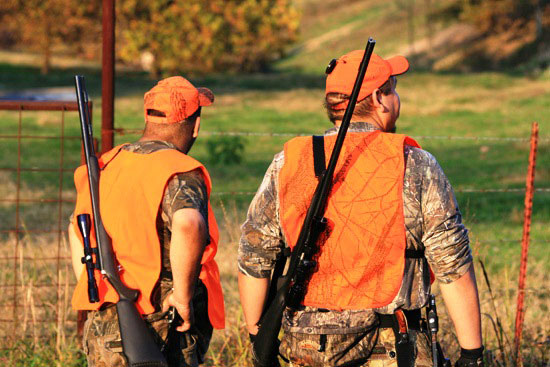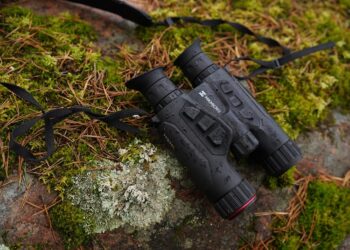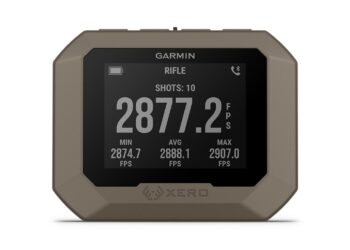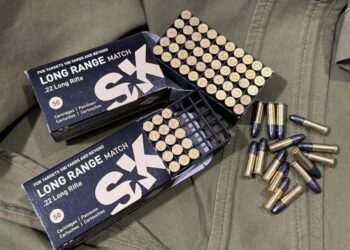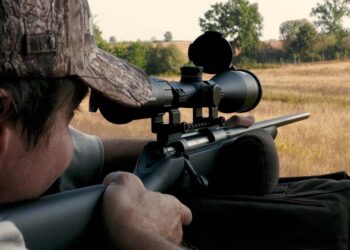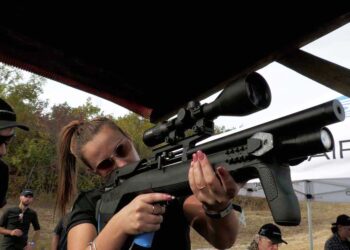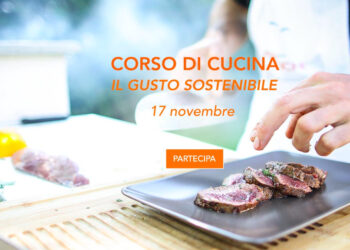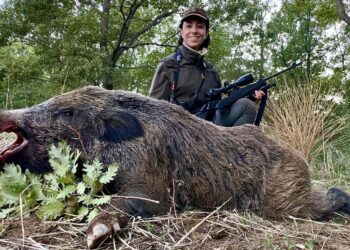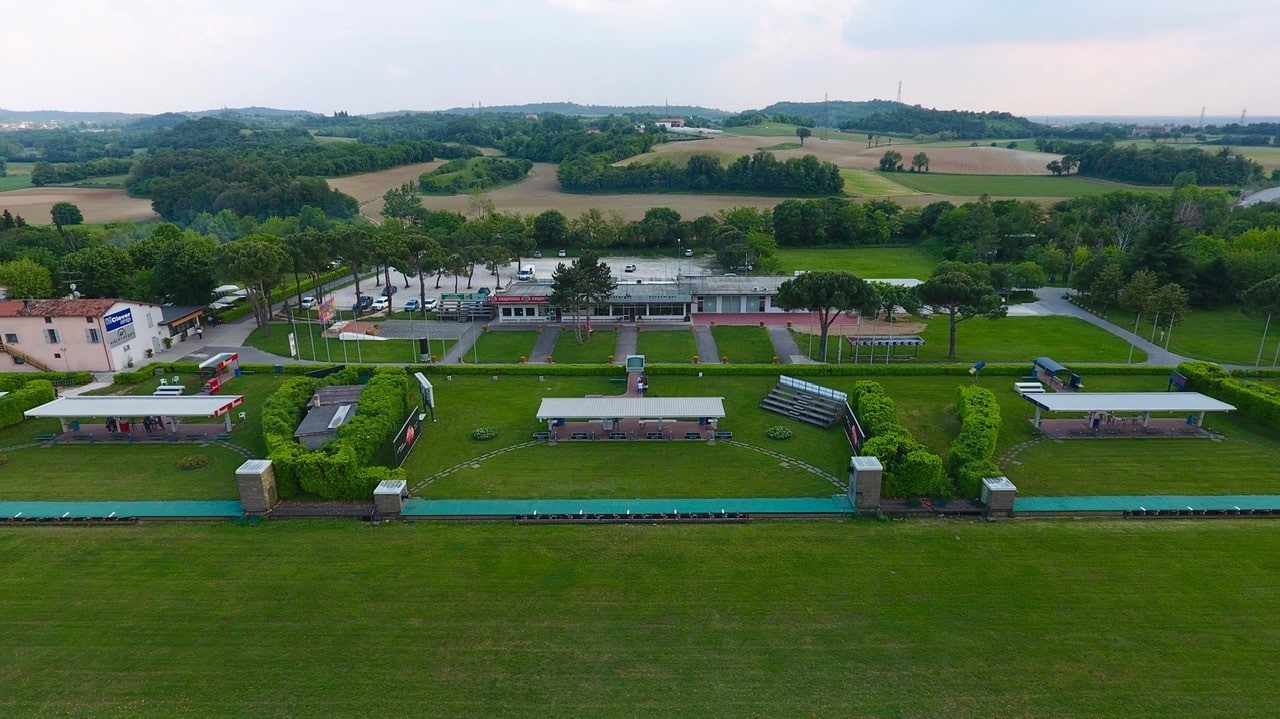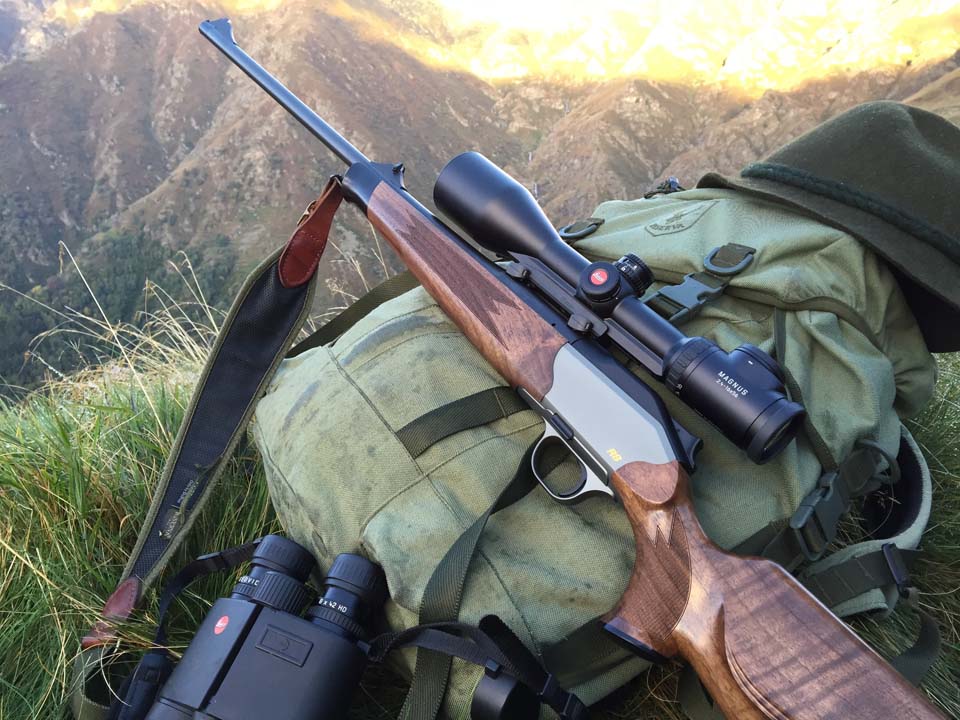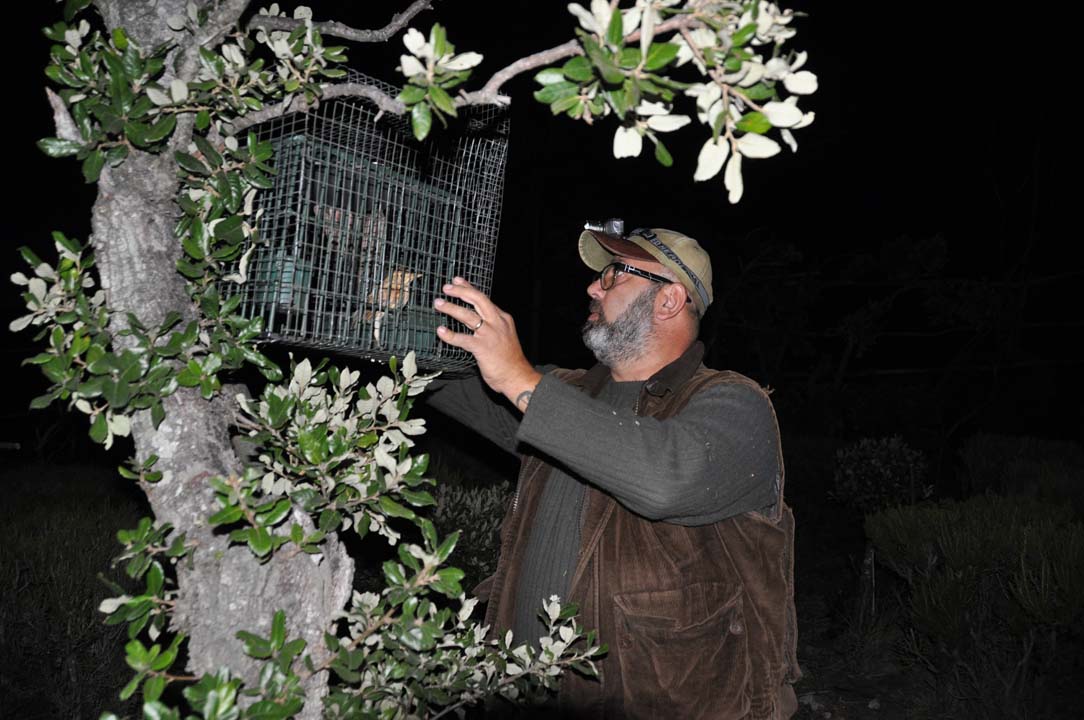
Hunting from stationary stalking with i live calls it is truly an art form. It is necessary to know well the habits of the wild, their food preferences, the influence of the weather on their behavior and in addition you must have some knowledge of botany, to select the plant species to plant, to prune them according to a scheme that is not artificial. but at the same time allows the positioning of the decoys and the easy recovery of the felled items. A splendid and generous October morning spent at the shed with Andrea and Remo becomes the right opportunity to have a chat about their passion.
VO: We are in the province of Grosseto, in the paradise between Follonica and Castiglione della Pescaia, an area known for migratory hunting. Is there a strong tradition of hunting thrushes with live calls?
AP: In this area the tradition of the huts is a somewhat exported tradition. Until a few years ago, the Maremma mostly practiced flying hunting. However, we have evolved a bit, taking inspiration from hunters from other parts of Tuscany, from Florence, Pistoia, Lucca, Montecatini. In Maremma we are not many to practice it but we are equipping ourselves well.
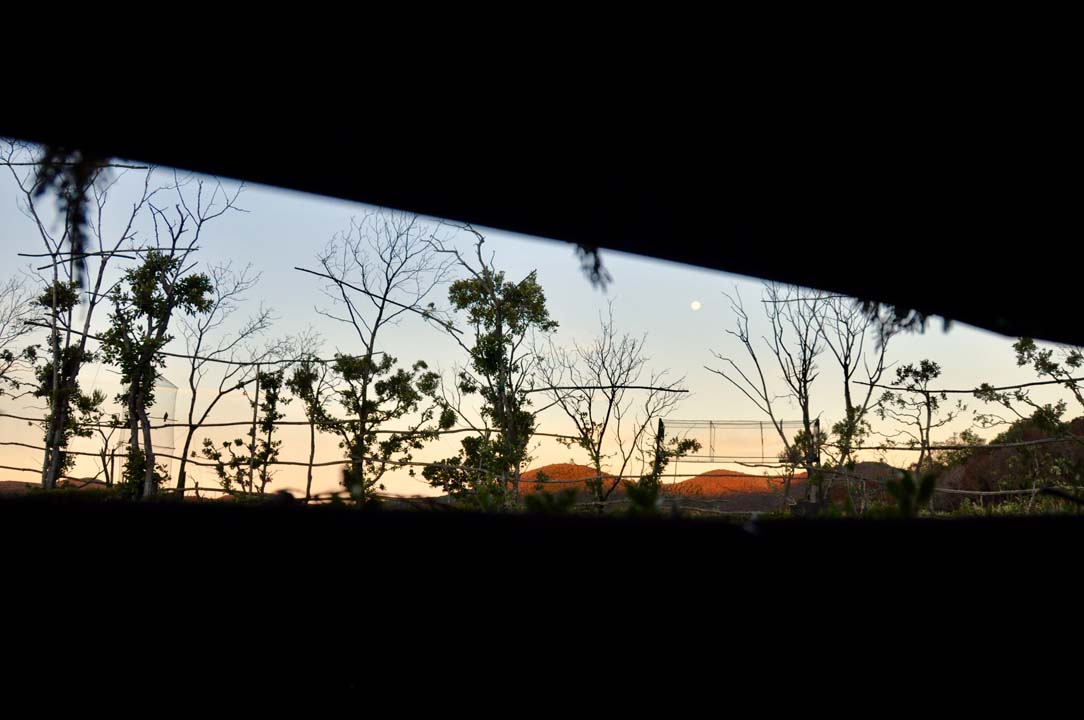
VO: More than good, I would say, given the result of the day! How many cages do you have?
AP: With my friend and hunting partner Remo we have about 90 cages in all. The calls are many, and in addition we have embarked on the path of breeding. This entails problems of space as well as of time. For this reason we have divided the tasks: I take care of bottacci and merlons while Remo takes care of pebbles and cesene. In October we go to the sea stalking while then November we move to the hinterland stalking.
VO: And you Remo, how many years have you undertaken this form of hunting?
MRI: I started 6 years ago, when Andrea "punctured" me (infected ed). I know your dad very well when shooting skeet in the same volley. There I met Andrea. He had come to try a rifle. He invited me several times to the stakeout. I only needed to go once: from that morning I got the call sickness. As Andrea said, we divided the tasks. Between the two of us we have about 90 cages, and managing them alone was too difficult, we are both very busy with the work and then the management of the shed takes us all year round: new buckets, tending the hedges… it's a continuous job. We have two huts on the hills (one at 1000m above sea level and one at 600m) and one here by the sea which is the one that is cared for the most during the year, also because sasselli and cesene are less and less. Last season was a good year and we hope the next will be the same.
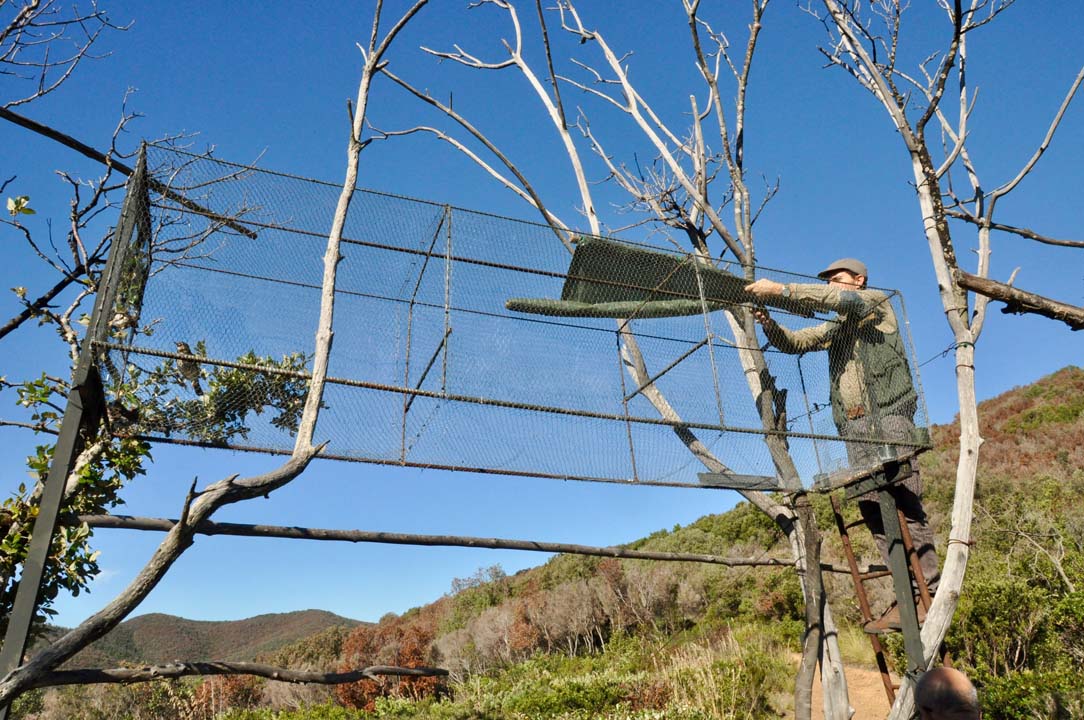
VO: What is the best period in this area of the Grosseto Maremma?
MRI: Here at the sea we start around September 25th and stop when we make the first stone. The sassello is the last turdide in the pass, so when the sassello enters here on the sea it means that up in the hills and in the mountains they already begin to be there and then we move to the two huts higher up. So, considering the 4 species we come to hunt about 4 months. The highlight of the call-song is tight tight 30-40 days. Of course, you can always find the call phenomenon that sings you 60 days but it is quite rare.
VO: Remo spoke of so much commitment. Andrea, what do you think: are there any dead periods or do you work indifferently all year round?
AR: Io I hunt to the shed since 2001. I have dedicated 16 of the 29 years of hunting activity to this form of hunting. I can say that the shed takes you away all year round. The busiest months for the care of the post are January and February for cutting buckets and poles and then July and August for cutting the lawn, repainting and covering the shed.
VO: I saw that three aviaries were used in addition to the cages.
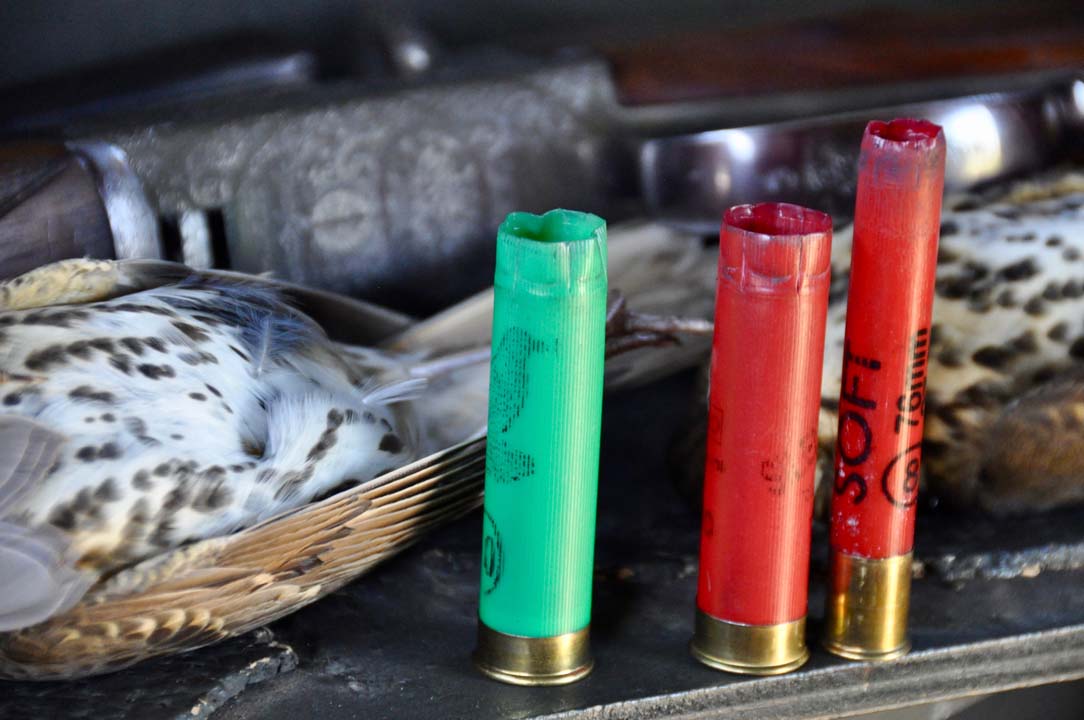
AP: It hasn't been that long. We have been using them for 3-4 years. This is a practice that we claim authorship in the area. The vertical bell here in Maremma had never been used. We have two, 3 meters long, with 2 bottacci inside and then from this year we have made a vertical tunnel in the air. For now they have given excellent results.
VO: Andrea, what calibers do you use?
AP: I use the 28 gauge and the 8 gauge while Remo now almost exclusively uses the 410. Obviously I reload and do all the cartridges. They have been tested for years now. I have an exceptional charge for the 28: it was also appreciated by many other hunters to whom I recommended it on the forum.
VO: You were talking about forums, are you very active on social networks?
AP: Not really me, Remo is more social than me. I was among the first to participate in the forum when it came out on the migratoria.it portal, we are talking about 2002-2003 when social networks were not so much in vogue. And on migratoria.it I made a lot of acquaintances and, let's face it, developed new skills! Those were the years in which the photoperiod was introduced and we in the forum tried various tables, perfecting the technique. I was also the forum moderator for a while and this allowed me to meet many fans and learn a lot.
VO: The photoperiod method is very fascinating. How difficult is it for someone who is approaching this type of hunting for the first time?
AP: Well, in the beginning it was all quite complicated because it was all manual. Today there are automatic equipment where you turn on the neon and they do everything by themselves. Indeed, they are differentiated according to the species. It is very simple, much more effective than a sluice. And, not to be neglected, they are systems that are much less bloody and more respectful of animals.
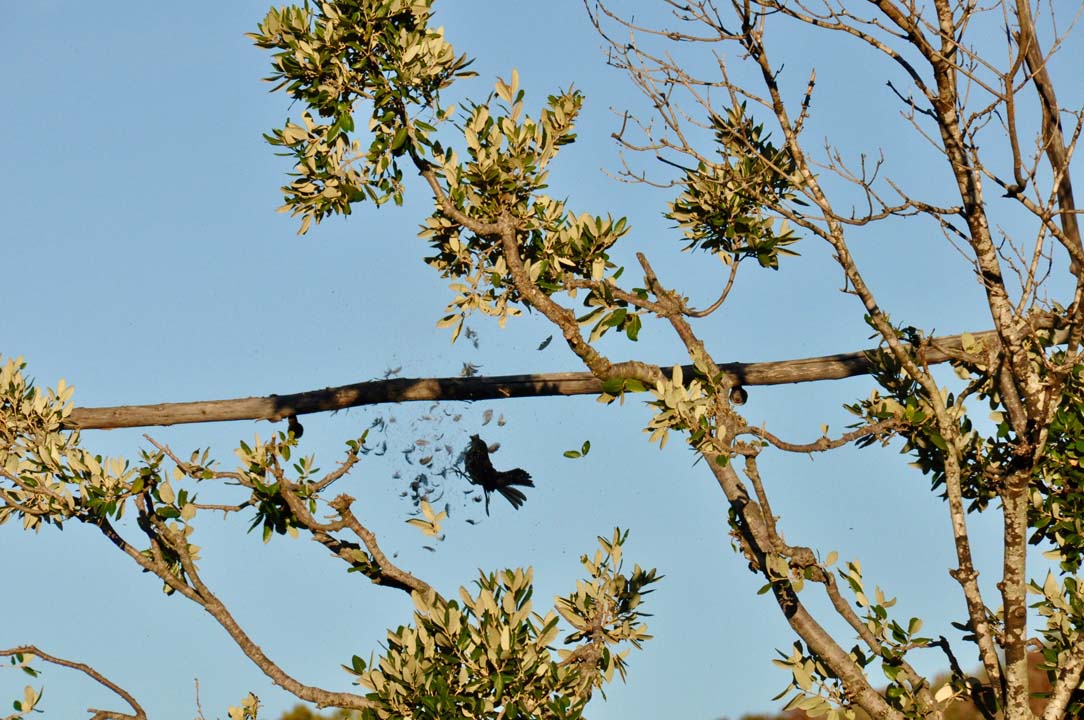
Sunrise, daylight, sunset and moon phases for every day of the year, varying the amount of hours of light daily, to have healthy animals that sing well all year round giving the best of them during the hunting season, with a louder and more lasting singing.
With this method the animal does not feel any kind of decompensation and carries out a replacement of the plumage without the need for help from man.
VO: Remo, would you hunt again on the fly? What is the greatest emotion in this type of hunting?
MRI: The shot itself is not difficult. The greatest thrill is the game of birds in curata. Seeing them at 200 meters start steering is priceless. After the shot, my dream would be that they would fall but then get up, start again and do the same lap again. Another aspect that excites me is the unexpected: one day a call sings you, another doesn't sing to you, you don't know if the calls of the previous year will do the same… it's compelling from this point of view.
That all forms of hunting were fascinating is a fact, and a lifetime would not be enough to practice them and become passionate about them all. The territory, the tradition, the encounters that take place or the simple inclination… the variables are infinite and so you end up choosing and practicing one hunting specialty rather than another. The important thing, for it to be truly exciting and ethical, is to commit to deepening the culture and competence that lies behind every type of hunting. And these two friends, Remo and Andrea, are the example to follow to approach real hunting with passion and dedication that always pay off, not only in terms of game bag.


